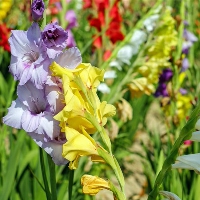The college entrance examination is around the corner. It is the most important thing for the examinees and their parents to apply for the college entrance examination. The examinees who want to apply for the Beijing Health Vocational College should pay attention to what is the admission score line for different majors of Beijing Health Vocational College in each province? Let's take a look at the details of the score of Beijing Health Vocational College in 2019!
2019 Summary of Scores of Each Major in Each Province of Beijing Vocational College of Health
Year Provincial Arts and Sciences Batch Specialty Score 2019 Beijing Arts and Sciences Special Batch Traditional Chinese Medicine Rehabilitation Technology (Physical C, Chemical C) 2742019 Beijing Science Special Batch Medical Imaging Technology (Physical C, Chemical C) 2762019 Beijing Arts and Sciences Special Batch Pharmacy (Physical C, Chemical C) 2822019 Beijing Science Special Batch Nursing (Female) (Physical C, Chemical C) 2862019 Beijing Arts and Sciences Special Batch Nursing (Female) (Physical C, Chemical C) 2862019 Beijing Arts and Sciences Special Batch Nursing (Female) (Physical C, Chemical C) 2922019 Chinese Medicine (Chemistry C, Biology C) 2922019 Chinese Medicine Rehabilitation Technology (Physics C, Chemistry C) 2592019 Chinese Medicine Rehabilitation Technology (Physics C, Chemistry C) 2712019 Chinese Medicine (Chemistry C, Biology C) 2952019 Chinese Medicine (Chemistry C, Biology C) 2952019 Chinese Medicine (Physics C, Chemistry C) 2962019 Beijing Science Special Batch Rehabilitation Treatment Technology (Physical C, Chemical C) 2592019 Beijing Science Special Batch Medical Examination Technology (Physical C, Chemical C) 2702019 Beijing Arts Special Batch Midwifery (Female) (Physical C, Chemical C) 2712019 Beijing Arts Special Batch Medical Examination Technology (Physical C, Chemical C) 2742019 Beijing Arts Special Batch Medical Imaging Technology (Physical C, Chemical C) 2792019 Beijing Science Specialist Batch Midwifery (Female) (Physics C, Chemistry C) 284 Introduction to Popular Advantages of Beijing Vocational College of Health
Medical imaging technology
Students majoring in medical imaging technology mainly learn basic theoretical knowledge of basic medicine, clinical medicine and medical imaging, receive basic training in conventional radiology, CT, MRI, ultrasound medicine, DSA, nuclear medicine and other operational skills, and have the ability to diagnose and treat diseases by means of imaging diagnostics and interventional medicine.
pharmacy
Pharmacy is a discipline to train senior scientific and technical talents with basic theories, knowledge and experimental skills of pharmacy, who can engage in identification, drug design, general drug preparations and clinical rational drug use in the fields of drug production, inspection, circulation, use, research and development.
Traditional Chinese Medicine
Traditional Chinese medicine is a discipline that studies the basic theory and clinical application of traditional Chinese medicine, and is one of the basic disciplines of various specialties of traditional Chinese medicine. The content includes the concept of traditional Chinese medicine, Chinese pharmacy, the origin and development of traditional Chinese medicine; The origin and collection of traditional Chinese medicine, the concept of traditional Chinese medicine, and how to develop authentic medicinal materials under the premise of ensuring the efficacy; The concept, purpose and method of Chinese medicine processing; The concept of the nature of traditional Chinese medicine, the mechanism of treating diseases with traditional Chinese medicine, the purpose and principle of the compatibility of traditional Chinese medicine, the concept of "seven emotions" of drugs, and the application law of traditional Chinese medicine; The concept and main contents of drug use taboos; Dose and usage, the relationship between dose and efficacy, the basis for determining the dose and the decoction and administration of traditional Chinese medicine, etc.

